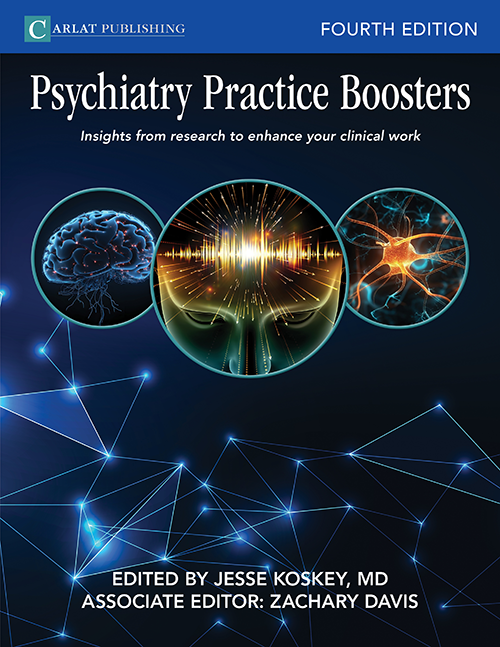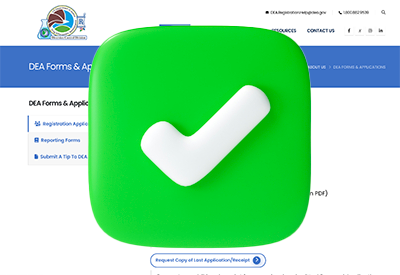Home » The Explosion of the ADHD Diagnosis: The Key Causes
The Explosion of the ADHD Diagnosis: The Key Causes
January 1, 2016
From The Carlat Child Psychiatry Report
Stephen P. Hinshaw, PhD
Rates of ADHD have increased significantly in the U.S. over the past several years, leading to an ongoing debate about the validity of the disorder. Because you are likely to be asked by patients (or their parents) about this issue, it’s helpful for you to have some background in exactly how much the prevalence has increased, and what factors may be driving this trend.
One of the key sources of information on ADHD prevalence in the U.S. is the National Survey of Children’s Health (NSCH). In partnership with the Centers for Disease Control and Prevention (CDC), the NSCH methodology entails telephone surveys of randomly sampled families in all 50 states. The specific questions about ADHD include whether a health care provider ever told the survey respondent (usually the child’s parent or guardian) that the child has ADHD—and if a diagnosis was made, whether the youth is taking medication for ADHD. As you can see, the methodology isn’t perfect, as there’s no guarantee that the diagnosis was accurate, but it does give us a good idea about the prevalence of diagnosed ADHD as perceived by parents.
This survey has been conducted three times in the past decade, yielding progressively increasing prevalence rates: 7.8% in 2003, 9.5% in 2007, and 11% in 2011–12. If the latest 11% prevalence figure is accurate, that would mean that about 6.4 million young people have ADHD in the U.S., or 1 in 9 children (Visser SN et al, J Amer Acad Child Adolesc Psychiatry 2014;53:34–46). Because boys are more likely to receive this diagnosis, their apparent rate is 15%, or nearly 1 in 6—and for boys of high school age, the prevalence is nearly 1 in 5.
Given that there is no objective test for ADHD, it’s reasonable to wonder if the true prevalence of ADHD is rising to this extraordinary extent, or whether it is being overdiagnosed. Keep in mind that the prevalence of ADHD in other developed countries is consistently estimated in the 5%-7% range—casting further doubt on the 11% figure in the U.S. (Polanczyk et al, Am J Psychiatry 2007;164(6):942–948).
In order to explore this issue, my colleague Richard Scheffler (a health economist) and I have done extensive research on the possible causes of the rising rates of the disorder, and we recently published a book summarizing the relevant data (Hinshaw SP and Scheffler RM, The ADHD Explosion: Myths, Medication, Money, and Today’s Push for Performance. New York, NY: Oxford;2014:254).
Despite the tenor of the book’s title, we do not believe that ADHD is a myth. In fact, we believe that the disorder is a legitimate, debilitating condition that responds well to a variety of treatments. Nonetheless, it is also clear that the high prevalence of ADHD in the U.S. may be inflated, and in this article I will summarize some of the factors leading to this potentially artifactual “explosion” of ADHD.
Consumer demand for stimulants for nonclinical purposes
Stimulants clearly improve both the core symptoms of ADHD and the many aspects of cognitive functioning in people with the disorder. However, their ability to improve cognitive function in children and adults without any psychiatric diagnosis is far more questionable (Smith ME and Farah MJ, Psychol Bull 2011;137(5):751–752). Even so, the strong perception exists that stimulants are “smart pills,” whether those benefits can be quantified in study conditions or not. This “likability” of stimulants may lead to inflated diagnoses as people without ADHD may report improved performance, real or imagined. It has also fueled high rates of “diversion”—the taking of medications by the general public, particularly college students.
Changes in disability laws
When the Individuals with Disabilities Education Act (IDEA) was reauthorized in 1991, ADHD was for the first time included specifically as a type of disability that gained patients special accommodations. At nearly the same time, Medicaid reimbursements began to include ADHD. Rates of ADHD diagnosis throughout the U.S. rose rapidly through the 1990s, presumably in part because of these legal and policy changes. Apparently, as parents and physicians learned that the ADHD label allowed more mandated services, pressures to apply that diagnosis increased.
Unintended consequences of No Child Left Behind policies
One of the more interesting sources of inflated ADHD rates is related to a series of policies designed to improve test scores and graduation rates in U.S. schools. We were led to this research by another striking ADHD prevalence finding that emerged from the NSCH. Although the main observation has been an inexorable rise in national ADHD prevalence rates, the NSCH also uncovered a huge state-by-state variation in diagnosed prevalence. The highest rates are in the South and Midwest; the lowest are in the West. Significant variations in disease rates in different states provide a “natural experiment” in the attempt to isolate factors that might lead to artificially inflated (or deflated) rates of diagnosis.
Our research method was to study in detail two highly contrasting states: North Carolina, which had a 2007 ADHD prevalence of 15.5% (and a medication rate of 74.4% of those diagnosed), vs. California, with a prevalence of only 6% (medication rate of 49%).
What explains this large difference? A small part relates to racial and ethnic diversity. For example, 49% of the CDC’s California sample was Hispanic, vs. only 9% of the North Carolina sample. Other research has shown that Hispanics are less likely to be diagnosed with ADHD than other ethnicities—so a state with a relatively large population of Hispanics might have a lower ADHD prevalence in part due to ethnic variation. However, when we statistically controlled for differences in ethnic composition, there was still a far greater prevalence in North Carolina.
The more important difference between the two states, by far, turns out to relate to school improvement initiatives such as the No Child Left Behind Act (NCLB). Such policies differ in specifics, but their common feature is their provision of financial incentives for schools to improve student performance (usually measured by test scores), as well as financial sanctions for schools that do poorly.
How might such policies lead to inflated rates of ADHD? There are at least two mechanisms. First, in some regions, the test scores of children with ADHD were not included in the test score averages that schools must report to their state. Thus, if low-scoring students can get an ADHD diagnosis, a school enriches its pool of test-taking students with high scorers—leading potentially to rewards to the school for performance improvement. Second, even in school districts that do count test scores of ADHD students, there is still an incentive to encourage diagnosis. Recall that the 1991 IDEA law enabled kids with ADHD to be eligible for special educational accommodations, such as more time for test-taking. If such accommodations help to improve test scores, then schools would have a strong incentive to ensure that ADHD diagnoses are not missed.
To see whether NCLB policies had the unintended effect of increasing ADHD diagnoses, we compared prevalence rates before and after NCLB was implemented. We found that, as predicted, NCLB had a profound effect on rates of ADHD—but only for youth near or below the federal poverty level (the law targets Title I schools with many low-income students). From 2003 (when NCLB was implemented) to 2007, rates of ADHD for impoverished youth increased from 10% to 15.3% in those states where NCLB was new—an increase of over 50%. In states that already had implemented their own versions of NCLB before 2003, however, there was no corresponding increase in ADHD rates, which makes sense, because the diagnosis inflation effect of the policy would have already occurred in such states (for more detail, see Fulton BF et al, Psychiatric Services 2015;66(10):1074–1082).
Other factors
In our book, we discuss other factors that may contribute to inflated ADHD rates, but are less easy to quantify. One of these is the increasing aggressiveness of pharmaceutical marketing practices, including direct-to-consumer advertising and industry-funded direct promotion to doctors. Another potential factor is that clinicians do not always follow gold-standard guidelines for careful diagnostic evaluations, which, although time-consuming, can often find that apparent ADHD symptoms are actually caused by other problems, such as poor family environments or comorbid conditions. Finally, ADHD is often diagnosed by busy primary care physicians who may not have the time or the expertise to delve into the nuances of diagnosis.
In sum, while ADHD is a legitimate and disabling condition for many people, a number of social, political, and economic factors have combined to artificially inflate its reported prevalence in the U.S. The unfortunate consequence is that, at least in some quarters, ADHD has acquired a reputation of being a trivial and possibly manufactured disorder—potentially fueling its stigmatization. Being more cautious in our policy decisions and in our diagnostic practices will help to improve the public’s confidence in our field.
Child PsychiatryOne of the key sources of information on ADHD prevalence in the U.S. is the National Survey of Children’s Health (NSCH). In partnership with the Centers for Disease Control and Prevention (CDC), the NSCH methodology entails telephone surveys of randomly sampled families in all 50 states. The specific questions about ADHD include whether a health care provider ever told the survey respondent (usually the child’s parent or guardian) that the child has ADHD—and if a diagnosis was made, whether the youth is taking medication for ADHD. As you can see, the methodology isn’t perfect, as there’s no guarantee that the diagnosis was accurate, but it does give us a good idea about the prevalence of diagnosed ADHD as perceived by parents.
This survey has been conducted three times in the past decade, yielding progressively increasing prevalence rates: 7.8% in 2003, 9.5% in 2007, and 11% in 2011–12. If the latest 11% prevalence figure is accurate, that would mean that about 6.4 million young people have ADHD in the U.S., or 1 in 9 children (Visser SN et al, J Amer Acad Child Adolesc Psychiatry 2014;53:34–46). Because boys are more likely to receive this diagnosis, their apparent rate is 15%, or nearly 1 in 6—and for boys of high school age, the prevalence is nearly 1 in 5.
Given that there is no objective test for ADHD, it’s reasonable to wonder if the true prevalence of ADHD is rising to this extraordinary extent, or whether it is being overdiagnosed. Keep in mind that the prevalence of ADHD in other developed countries is consistently estimated in the 5%-7% range—casting further doubt on the 11% figure in the U.S. (Polanczyk et al, Am J Psychiatry 2007;164(6):942–948).
In order to explore this issue, my colleague Richard Scheffler (a health economist) and I have done extensive research on the possible causes of the rising rates of the disorder, and we recently published a book summarizing the relevant data (Hinshaw SP and Scheffler RM, The ADHD Explosion: Myths, Medication, Money, and Today’s Push for Performance. New York, NY: Oxford;2014:254).
Despite the tenor of the book’s title, we do not believe that ADHD is a myth. In fact, we believe that the disorder is a legitimate, debilitating condition that responds well to a variety of treatments. Nonetheless, it is also clear that the high prevalence of ADHD in the U.S. may be inflated, and in this article I will summarize some of the factors leading to this potentially artifactual “explosion” of ADHD.
Consumer demand for stimulants for nonclinical purposes
Stimulants clearly improve both the core symptoms of ADHD and the many aspects of cognitive functioning in people with the disorder. However, their ability to improve cognitive function in children and adults without any psychiatric diagnosis is far more questionable (Smith ME and Farah MJ, Psychol Bull 2011;137(5):751–752). Even so, the strong perception exists that stimulants are “smart pills,” whether those benefits can be quantified in study conditions or not. This “likability” of stimulants may lead to inflated diagnoses as people without ADHD may report improved performance, real or imagined. It has also fueled high rates of “diversion”—the taking of medications by the general public, particularly college students.
Changes in disability laws
When the Individuals with Disabilities Education Act (IDEA) was reauthorized in 1991, ADHD was for the first time included specifically as a type of disability that gained patients special accommodations. At nearly the same time, Medicaid reimbursements began to include ADHD. Rates of ADHD diagnosis throughout the U.S. rose rapidly through the 1990s, presumably in part because of these legal and policy changes. Apparently, as parents and physicians learned that the ADHD label allowed more mandated services, pressures to apply that diagnosis increased.
Unintended consequences of No Child Left Behind policies
One of the more interesting sources of inflated ADHD rates is related to a series of policies designed to improve test scores and graduation rates in U.S. schools. We were led to this research by another striking ADHD prevalence finding that emerged from the NSCH. Although the main observation has been an inexorable rise in national ADHD prevalence rates, the NSCH also uncovered a huge state-by-state variation in diagnosed prevalence. The highest rates are in the South and Midwest; the lowest are in the West. Significant variations in disease rates in different states provide a “natural experiment” in the attempt to isolate factors that might lead to artificially inflated (or deflated) rates of diagnosis.
Our research method was to study in detail two highly contrasting states: North Carolina, which had a 2007 ADHD prevalence of 15.5% (and a medication rate of 74.4% of those diagnosed), vs. California, with a prevalence of only 6% (medication rate of 49%).
What explains this large difference? A small part relates to racial and ethnic diversity. For example, 49% of the CDC’s California sample was Hispanic, vs. only 9% of the North Carolina sample. Other research has shown that Hispanics are less likely to be diagnosed with ADHD than other ethnicities—so a state with a relatively large population of Hispanics might have a lower ADHD prevalence in part due to ethnic variation. However, when we statistically controlled for differences in ethnic composition, there was still a far greater prevalence in North Carolina.
The more important difference between the two states, by far, turns out to relate to school improvement initiatives such as the No Child Left Behind Act (NCLB). Such policies differ in specifics, but their common feature is their provision of financial incentives for schools to improve student performance (usually measured by test scores), as well as financial sanctions for schools that do poorly.
How might such policies lead to inflated rates of ADHD? There are at least two mechanisms. First, in some regions, the test scores of children with ADHD were not included in the test score averages that schools must report to their state. Thus, if low-scoring students can get an ADHD diagnosis, a school enriches its pool of test-taking students with high scorers—leading potentially to rewards to the school for performance improvement. Second, even in school districts that do count test scores of ADHD students, there is still an incentive to encourage diagnosis. Recall that the 1991 IDEA law enabled kids with ADHD to be eligible for special educational accommodations, such as more time for test-taking. If such accommodations help to improve test scores, then schools would have a strong incentive to ensure that ADHD diagnoses are not missed.
To see whether NCLB policies had the unintended effect of increasing ADHD diagnoses, we compared prevalence rates before and after NCLB was implemented. We found that, as predicted, NCLB had a profound effect on rates of ADHD—but only for youth near or below the federal poverty level (the law targets Title I schools with many low-income students). From 2003 (when NCLB was implemented) to 2007, rates of ADHD for impoverished youth increased from 10% to 15.3% in those states where NCLB was new—an increase of over 50%. In states that already had implemented their own versions of NCLB before 2003, however, there was no corresponding increase in ADHD rates, which makes sense, because the diagnosis inflation effect of the policy would have already occurred in such states (for more detail, see Fulton BF et al, Psychiatric Services 2015;66(10):1074–1082).
Other factors
In our book, we discuss other factors that may contribute to inflated ADHD rates, but are less easy to quantify. One of these is the increasing aggressiveness of pharmaceutical marketing practices, including direct-to-consumer advertising and industry-funded direct promotion to doctors. Another potential factor is that clinicians do not always follow gold-standard guidelines for careful diagnostic evaluations, which, although time-consuming, can often find that apparent ADHD symptoms are actually caused by other problems, such as poor family environments or comorbid conditions. Finally, ADHD is often diagnosed by busy primary care physicians who may not have the time or the expertise to delve into the nuances of diagnosis.
In sum, while ADHD is a legitimate and disabling condition for many people, a number of social, political, and economic factors have combined to artificially inflate its reported prevalence in the U.S. The unfortunate consequence is that, at least in some quarters, ADHD has acquired a reputation of being a trivial and possibly manufactured disorder—potentially fueling its stigmatization. Being more cautious in our policy decisions and in our diagnostic practices will help to improve the public’s confidence in our field.
Issue Date: January 1, 2016
Table Of Contents
Recommended
Newsletters
Please see our Terms and Conditions, Privacy Policy, Subscription Agreement, Use of Cookies, and Hardware/Software Requirements to view our website.
© 2025 Carlat Publishing, LLC and Affiliates, All Rights Reserved.


_-The-Breakthrough-Antipsychotic-That-Could-Change-Everything.jpg?1729528747)



